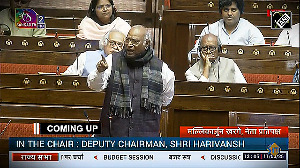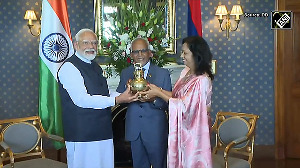Come March next, consumers shall have their local cheques cleared in a day. The Reserve Bank of India proposes to enable this by getting banks to bring in the Cheque Truncation System at the local clearing level.
Under this, cheques will no longer be sent to the clearing house but will be scanned on deposit and their electronic images (instead of the physical cheque) will be transmitted through the entire clearing cycle.
As local city and town networks get networked, the paperless clearing will also cover outstation clearing. Thus, payment of an outstation cheque, which now takes 10 days or more, will be available the same day or the next. Banks, which will have to bear the cost of this networking, will have to find the resources.
To enable this, a pilot project is being implemented in New Delhi by NCR Corporation, a payments solutions business provider. The project covers 2,500 branches of 83 banks in and around New Delhi. Commercial banks can choose their vendor but the vendors must meet the parameters set by RBI.
Kaza Sudhakar, general manager, department of payment and settlement systems, RBI, said that the new system will reduce operational risks. India is among the countries showing a continual growth in the usage of cheques. The number of cheques cleared is on an average 100 crore (1 billion) per year.
To enable CTS, RBI has already amended the Negotiable Instruments Act 1881, IT Act 2000 and the Banker's book Evidence Act 1891. While the IT cost for implementing the CTS remains a mystery, banks have to bear the cost.
CTS requires a scanner at the cheque accepting point, be it the ATM or the branch, readers and sorters at the service branch and an archival system to store the image of the cheque. The scanner captures the image of the cheque and the image is sent for clearing, instead of the physical cheque.
'Cheque truncation' allows a bank to stop the physical movement of cheques at the point of deposit itself and uses the image of the cheque and magnetic ink character recognition data at the bottom of every cheque for processing the outward, inward and return legs of the clearing cycle. It streamlines the cheque-processing environment and links it up with core banking and other banking applications.
MICR data and cheque images are transmitted to the clearing house via secure communication network for clearing and settlement. Data and images are stored in an archive for future retrieval by the bank. This will reduce transaction costs and will enhance customer service.






 © 2025
© 2025